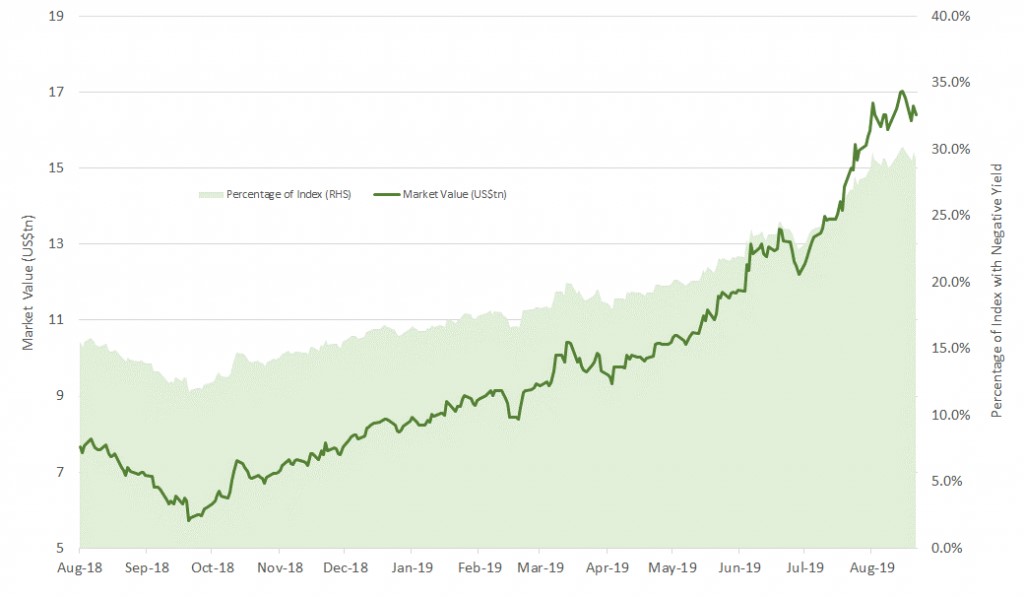While historically this event has been a portent of economic weakness, interpretation of this inversion is more difficult this time around, because the overall starting point for yields is so much lower than the past. Developments in the currency and commodity markets suggest that global capital is seeking to maintain liquidity, safety, and if possible secure positive carry.
For investors in corporate bonds, many parts of the credit market still offer positive yields. However, a prolonged period of low or negative sovereign yields is a unique situation that could have unintended negative consequences, although we see little evidence of this to date.
Patience – and the art of spotting traps
Following the Reserve Bank of Australia’s interest rate cuts in June and July, banks wasted little time passing these through to savers (and borrowers to a lesser extent). As a result, conservative and yield-dependent investors are being pressured to consider taking on additional risk by contemplating other asset classes or reweighting portfolios toward riskier assets.
As the market value of bonds with a negative yield continues to rise, it is clear that many investors are willing to be patient, seeing these bonds as the financial equivalents of a “mattress” under which they would otherwise store physical cash. In economic terms, (negative) time preference is winning the day, ahead of liquidity preference.
Figure 1: Market value of negative-yielding debt

Source: Bloomberg
Inverted yield curves – Will history repeat, rhyme, or is it different this time?
Most investors agree that the slope of a yield curve is an important indicator, but interpreting its meaning is always open to debate.
Up until the end of 2018, only the US Federal Reserve had been able to consistently increase rates against a backdrop of strong employment data. However, in 2019 the mood has shifted so dramatically that not only are central banks now cutting rates, but long-term rates are falling even more rapidly.
The expectation of renewed quantitative easing (QE) has played a key role. A constant companion of global investors since 2009, more recently a mixture of concerns over trade tensions and future inflationary expectations have influenced yield curves. In fact, it is possible that QE has been so influential in affecting the yield curve that the signals coming from it are not the same as previous episodes of inversion. Furthermore, inversions have never occurred with rates this low, creating additional uncertainty around the side effects of sustained low interest rate policies.
Low interest rates and credit – Can they learn to get along?
Lower financing costs are a double-edged sword – they should be creating more investment opportunities with positive present value, but flat yield curves make the returns on these projects lower and/or require longer investment horizons. Eventually, existing projects will reach the end of their useful lives, but firms will still need to service the debt issued to buy back shares in prior years. Low interest rates will keep this debt affordable for the foreseeable future, but ongoing refinancing requirements mean that issuers will be reliant on markets when it comes time to roll over these obligations.
Leverage measures could continue setting or retesting highs the longer interest rates remain low. In this scenario, a strong economy is increasingly necessary to support debt serviceability. Credit markets are still sanguine about corporate fundamentals, despite some spread volatility in August, but will become increasingly sensitive to the outlook if leverage continues to creep higher.
The increasing prevalence of negative interest rates, inverted yield curves, and other such pricing anachronisms is unprecedented in modern times. Central banks have played a pivotal role in causing these anomalies, and bond market pricing suggests that investors believe that in the absence of inflation, they have little choice but to continue following these trends. Inverted yield curves are watched closely as recession predictors, but may not be as reliable at this juncture, because of the influence of non-market factors on yields.
Despite what we expect to be an extended period of unconventional bond market activity, we believe credit market fundamentals are still sound, and retain a constructive view for the next six to 12 months.
Brad Dunn, senior credit analyst, Daintree Capital






